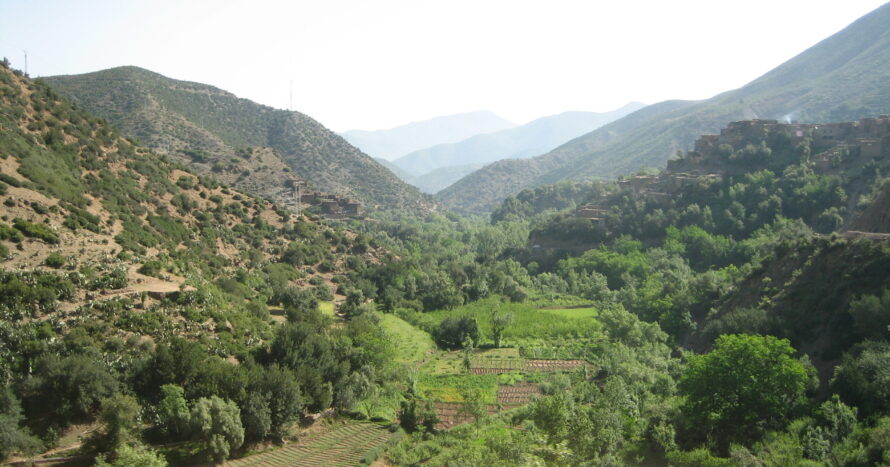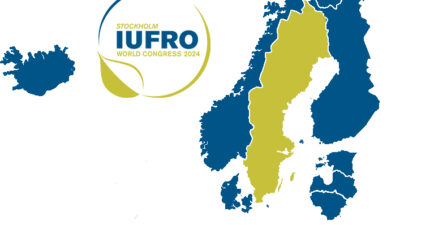Landscape approaches
Pros and Cons with Landscape approaches in practice in low income countries.
Landscape approaches are widely used to analyse growing pressures on our natural resources, and to identify the needs of present and future generations. The main driver of rural landscape change in coming decades is the rapid land use expansion and intensification required for increased food production and for wood and energy crops.
Poilicy brief
Integrated Landscape Approaches
Articles
Lessons from China for forest landscape restoration
Seminars and policy brief
The project presents how Landscape approaches differ from more traditional sectoral and project-based approaches considering environmental, economical and sociopolitical points of views. The target audience is governments, civil society, the private sector and academia. The project is a collaboration with SIANI and will result in at least one seminar (see info about the seminar, March 17th, below) and a policy brief sorting out the true challenges of the Landscape approach in low income countries.
Seminar
This seminar presented Pros and Cons with Landscape approaches in practice to meet future food and other competing demands in low income countries. Landscape approaches are widely used to analyse growing pressures on our natural resources, but the delineation of what constitutes a “landscape” for analytical, planning and management purposes are not always obvious.
The seminar discussed how Landscape approaches differ from more traditional sectoral and project-based approaches considering environmental, economical and sociopolitical points of views. Numerous attempts to secure consensus around major tropical land conversion projects illustrate the potential and the difficulties of reaching broad agreement on such issues. Forest issues are increasingly integrated in the concept.
The target audience is governments, civil society, the private sector and academia. The seminar is a collaboration between Think tank for international forestry issues (SIFI), Swedish International Agricultural Network Initative (SIANI) and Swedish University of Agricultural Sciences (SLU).
Program
13.00 Welcome, Moderator Dr. Fredrik Ingemarson, Program Manager, SIFI
13.05 Introduction to landscape approaches and future food demand, Dr. Björn Lundgren, Board Member, Think Tank for International Forestry Issues, SIFI
13.15 Landscape approaches to reconcile competing land uses, Dr. Liz Deakin, Post Doctoral Fellow, Center for International Forestry Research, CIFOR
14.00 Landscape approaches versus sectoral approaches, Mia Crawford, Deputy Director, Ministry of Enterprice and innovation
14.20 Practical experiences from WWF, Peter Westman, Environmental Protection Manager, World Wildlife Fund, WWF (TBC)
14.40 Coffee break
15.00 Comments from the social point of view, Ass. Prof. Camilla Sandström, Head of research Future Forest, Umeå University
15.20 Comments from the ecosystem services points of view, Prof. Anders Malmer, Director SLU Global, Swedish University of Agricultural Sciences, SLU
15.40 Comments from the economical point of view, Prof. Sten Nilsson, Board Member, SIFI
16.00 Panel discussion and questions from the audience, Speakers, Ola Möller, Senior Policy Specialist, Sida and Ambassador Lennart Båge, Board Member, SIFI
16.45 Final remarks and announcements regarding the policy brief, Jan Heino, Senior Specialist and Board Member, SIFI
17.00 End of seminar and way forward, Madeleine Fogde, Senior Project manager, SIANI
Videos and related slides from the seminar
Videos with individual presentations and related slides
Film recordings and presentations
Background
Integration of poverty alleviation goals
There has been a shift from conservation-orientated perspectives toward increasing integration of poverty alleviation goals in areas where agriculture, forestry, and other land uses compete with environmental and biodiversity goals. With an expected world population of 9 billion people in 2050, the global need for food, fibre and fuel has become a matter of high political concern.
Transcend traditional boundaries
Beyond 2030 the global competition for land is expected to increase exponentially. Societies will have to confront challenges that transcend traditional agricultural and environmental boundaries. The main driver is likely to be the intensity and spatial extent and location of agriculture. People and societies must make cross sectoral decisions at all levels. The development also creates new opportunities for economic development within rural, land-based sectors, as they exploit the rapidly expanding urban and international markets for more food, energy and wood products.
The Landscape approaches
Landscape approaches have gained prominence in the search for solutions to reconcile conservation and development tradeoffs, and the term has evolved incrementally to encompass a wide variety of interpretations. The approaches seek to provide tools and concepts for allocating and managing land to achieve social, economic, and environmental objectives. Landscape approaches imply shifting from project-oriented actions to process-oriented activities.
Identification of a landscape
The challenge in agricultural landscapes is often to bring about transformational change while maintaining the attributes of the landscape that provide resilience to undesirable changes. There are challenges at many levels, but governance issues and those of poor institutional capacity are judged by practitioners and other experts to be the most pervasive. Decisions are seldom taken on the landscape level. In addition, the identification and delineation of what constitutes a “landscape” for analytical, planning and management purposes are not always obvious. Numerous attempts to secure consensus around major tropical land conversion projects and the widespread use of the principle of free, prior, and informed consent illustrate the potential and the difficulties of reaching broad agreement on such issues.
Conservation becomes peripheral
As global population continues to increase in coming decades, particularly so in the tropics, dependencies on sustainable food security will increase. Thereby landscapes will be expected to provide an increasing number of functions, whereas strict protected areas (with conservation as a dominant objective) may increasingly become geographically and conceptually peripheral.
Project Hosts
The project is hosted by the SIANI network and the think tank SIFI. SIANI offers an open and interactive platform for exchange on global issues around food security, poverty reduction and environmental sustainability. SIFI’s vision is to work with multidisciplinary natural resource management based on an independent and strategic global trend analysis for the future use of forest resources.
Main reference:
Landscape Approach Principles – Sayer et al(4)(2)
Integrated Landscape Approaches – map protocol Reed et al 2014
Landscape approaches – what are the pre-conditions for success – Sayer et al 2014
Project contact: Dr. Fredrik Ingemarson
Picture: The Atlas Mountains-Morocco, Dr. Alexander Buck


